Make Me, I'm Yours
The urge to create is like new love--until your work starts to perplex you. Rembrandt understood. Here's what he taught me.
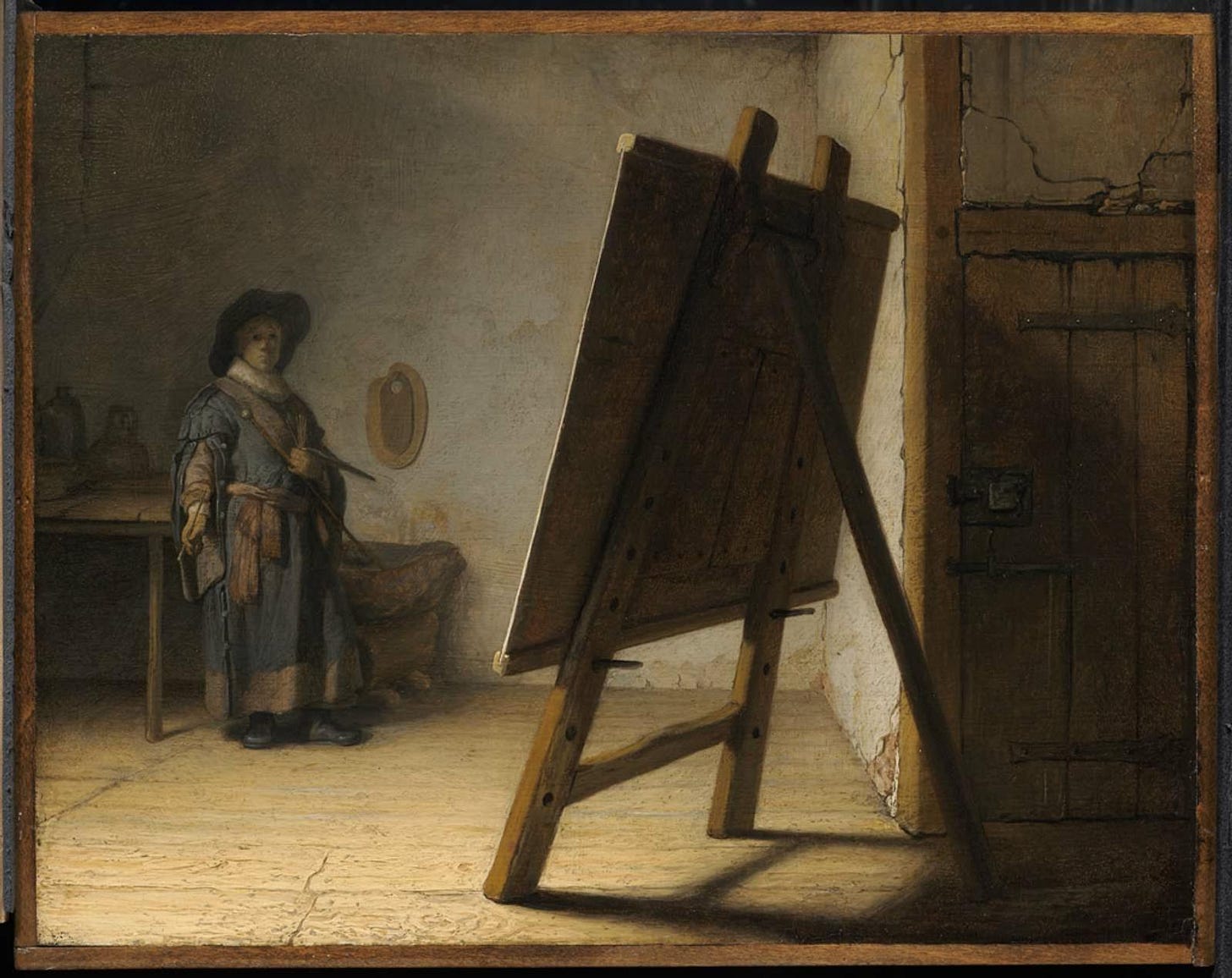
Something that doesn’t yet exist calls your name—a novel, a song, a play. It’s as tiny as a haiku, or big and bold as a mural that will turn a drab laneway into an explosion of color. “Make me, I’m yours,” it says, like the next love of your life. “Without you, I’m just another notion.” It gleams with possibility, this notion. In your imagination’s warm embrace, it can’t give you any trouble. Then you get to work, and your notion becomes its own thorny creature. Where is it going? What’s it all about? Who’s in charge here?
To create is human. To get lost on the way is human too.
Rembrandt knows how you feel. As magisterial a painter who ever held a brush, he too was disarmed, perplexed and awed by the work of conjuring art from a notion. Nearly 400 years ago, in his early 20s and already making his mark, he distilled the experience in a painting that speaks to baffled creators of anything at all. “The Artist in His Studio” is smaller than a placemat. If you listed the items in the stripped-down scene, you couldn’t fill a postcard. Does chipped plaster count? How about nails in the easel? Cracks in the floorboards? A mirror, the worse for wear. Yet the painting contains an entire imaginative world. Each viewing opens a fresh conversation with the master.
The painting lives at the Museum of Fine Arts in Boston, where I had the good fortune to stumble upon it in a long dry spell between books. The first had emptied my word hoard; the industry’s gatekeepers were not breathlessly awaiting the second. Notions whispered, “Make me” but died on the page. I looked into Rembrandt’s eyes, dark pools of resolute uncertainty fixed on the easel. He saw nothing but the conundrum of his canvas—empty, misbegotten, lacking only a final stroke, who can say?
That day in Boston, I didn’t dare call myself an honest minor writer. A real writer would have a market-worthy book underway, not false starts on a hard drive. “The Artist in His Studio” gave me hope. If Rembrandt gave himself time to crack the code of his next painting, I could do the same with my next book.
Step inside Rembrandt’s studio with me. Notice his attire—the robes abundantly layered, the outsize hat cocked with panache. He wears the trappings of early success like a child dressed for Halloween. The humble room swamps him, the door blocked by one leg of its most commanding feature: that easel, daring him to realize his vision.
When Hemingway was young and pursuing his destiny on the Left Bank, he sometimes couldn’t get a story off the ground. He wrote in A Moveable Feast,
…I would sit in front of the fire and squeeze the peel of the little oranges into the edge of the flame and watch the sputter of blue that they made. I would stand and look out over the roofs of Paris and think, “Do not worry. You have always written before and you will write now. All you have to do is write one true sentence. Write the truest sentence that you know.”
Rembrandt was reaching for one true brushstroke. Like Hemingway, he trusted himself to make the right move. He didn’t have to do it this minute. What he had to do was stay the course.
All his creative life of more than 40 years, Rembrandt painted, drew and etched himself. His self-portraits, somewhere around 90, comprise a visual memoir of relentless candor. He gloried in his youthful prime—the lush curls, the plumed hat—but did not spare the bulbous nose and sunken eyes of impoverished and bereaved old age. In the studio painting, his face is an eloquent blur. It could be anyone’s face, you might think. I used to think so myself. Look again. Then look at the self-portraits below. With a few strokes and shadows, he caught his own unchanging essence.
I’ve studied Rembrandt’s face in museums around the world. What compels my attention is not how his features changed over time but how he carried himself as an artist, true to his mission despite the loss of everyone he loved and all the money he had made in the years of swagger. When he painted himself in the studio, his soft young face a smudge of intention, he never guessed he would be buried in a pauper’s grave. He saw the one thing that mattered—the lodestar that kept me going until, at last, I had another book. He captured it in a portrait of creation itself. Any art worth making is bigger and wilder than the artist.
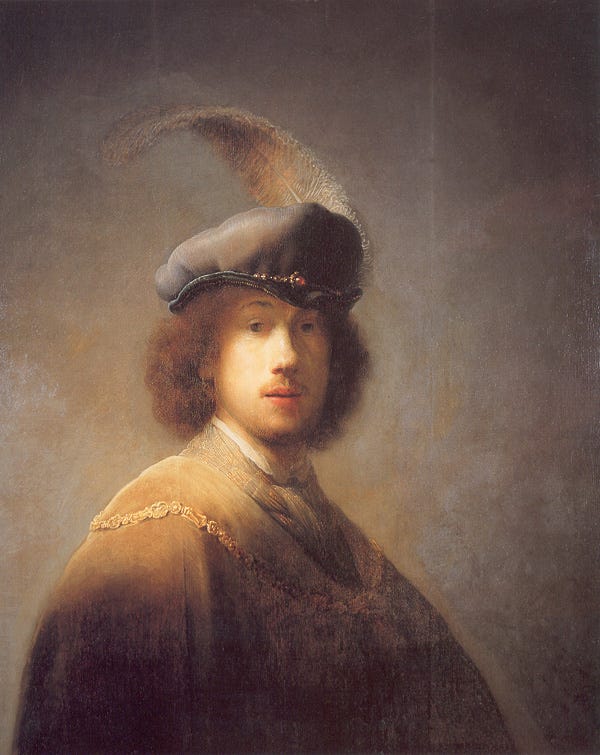
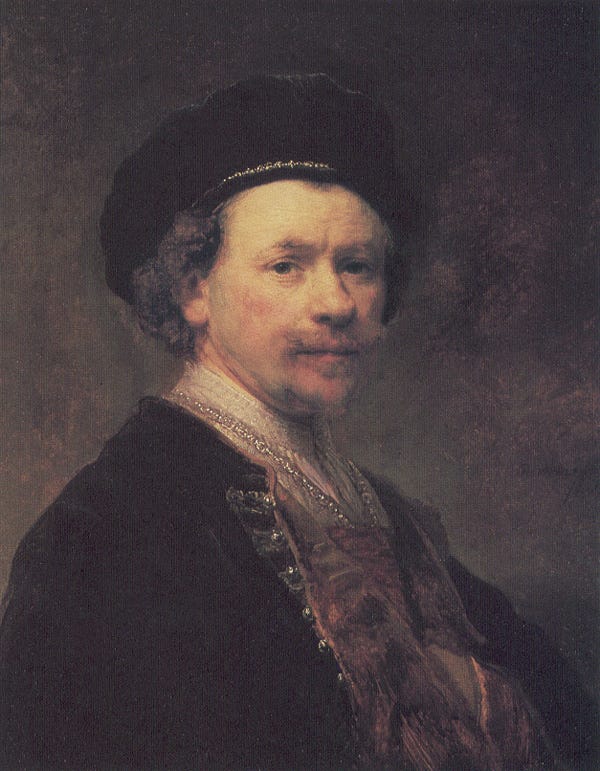
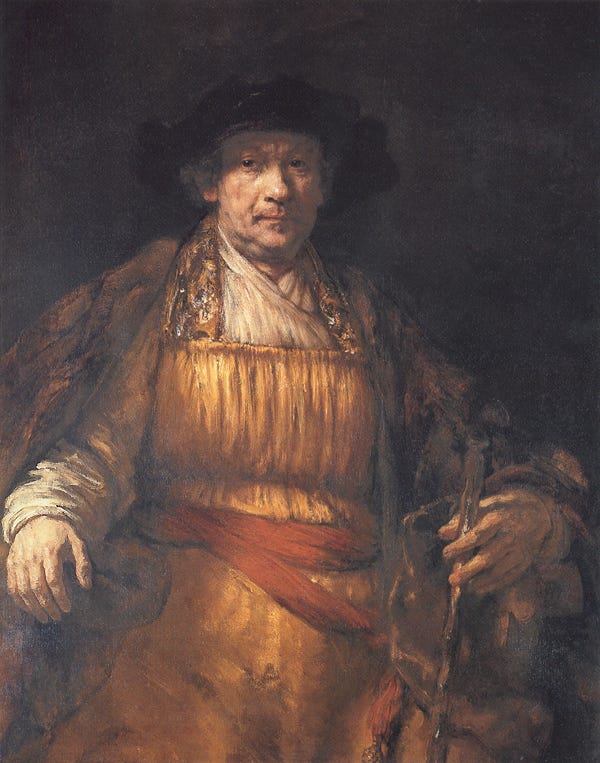
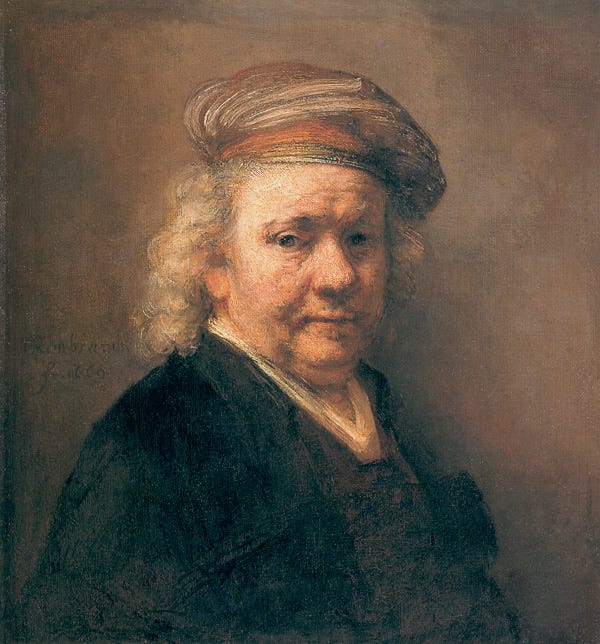
Bonus: It’s National Poetry Month, so here’s a joy of a poem for anyone grappling with a creative challenge. Click this link to read “The Problem” by the amazing Jane Hirshfield.
What are you making these days—a novel, a quilt, a bird house? What keeps you inspired? Is there a painting or a poem that lifts you as “The Artist in His Studio” does me? I’m listening.





Part of the pleasure of posting here is seeing what readers have to say. And a commenter, @linnesby, has picked up on a telling detail that I misconstrued. What I took to be a mirror on the wall is in fact a clean palette. This suggests that the canvas is still blank, and Rembrandt is contemplating the scale of the painting, deciding where to place the first brushstroke. He could, of course, be assessing a work in progress, as artists do all the time. I can still see my father, an artist, eying his unfinished painting from across the room. But if the painting is already taking shape, how to explain the clean palette? Maybe there's another somewhere? I prefer the simpler narrative: one palette, one painting waiting to be born, calling "Make me."
Every time I look at this painting, I see something different, thanks to this discussion. It now seems he may be holding a palette in his left hand, which supports the theory that the painting is underway. He's also holding something else I can't identify. And I'm not sure why an artist would be holding a staff--unless he's painting himself and it's a prop. He used quite a few of those.